If the rear seat is unsuitable, the seat belts may not perform their intended protective function.
If the rear seat is not stable, it may tip over during a journey.
When you install or remove the rear bench seat, body parts such as feet may become trapped when the rear bench seat is tipped.
If the rear bench seat is used improperly or removed incorrectly, the rear bench seat rollers may be damaged.
The three-person rear bench seat is available with or without a strut. The strut is located on the rear side of the three-person rear bench seat.
Install the three-person rear bench seat with strut only in the third row of seats (above the rear axle).
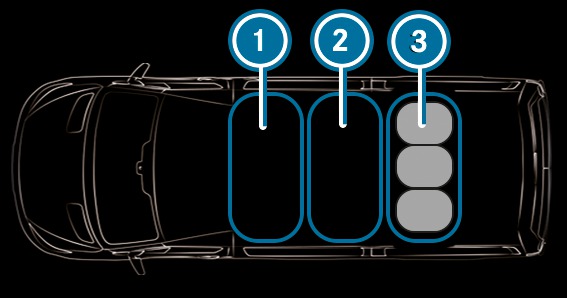



 .
. 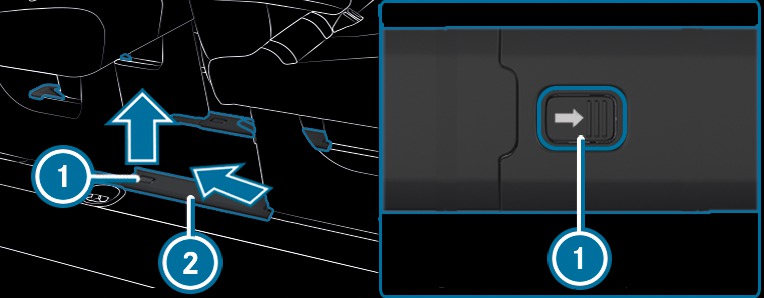
Perform these tasks carefully with the assistance of a second person.
 in the direction of the arrow and detach cover
in the direction of the arrow and detach cover  by pushing it to the top rear at an angle.
by pushing it to the top rear at an angle. 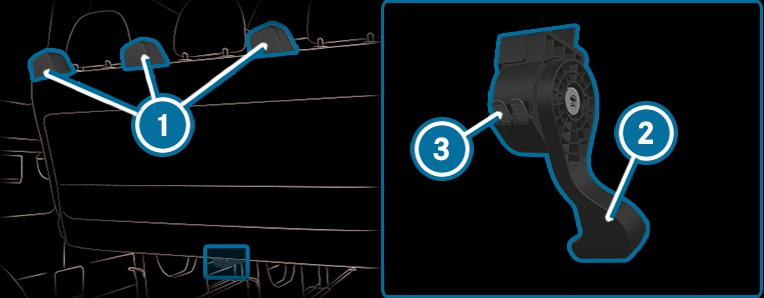
 for the bench seat all the way down and hold it there. At the same time, tilt the bench seat backwards slightly using the release handle and pull it slightly backwards.
for the bench seat all the way down and hold it there. At the same time, tilt the bench seat backwards slightly using the release handle and pull it slightly backwards. The locks on the bench seat legs will be unlocked and red indicator tabs  on the housing of release handle
on the housing of release handle  will be visible.
will be visible.
 and pull backwards slightly.
and pull backwards slightly. 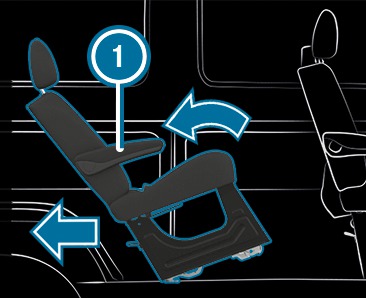
 backwards and pull it out of the seat shells.
backwards and pull it out of the seat shells. If the bench seat cannot be pulled out of the seat shells, the bench seat may be wedged in the seat anchorage. This can happen if the bench seat is tilted too far backwards.
If the seat cannot be pulled out of the seat shells, proceed as follows:
 .
. It may be necessary for the bench seats in front or behind to be removed.
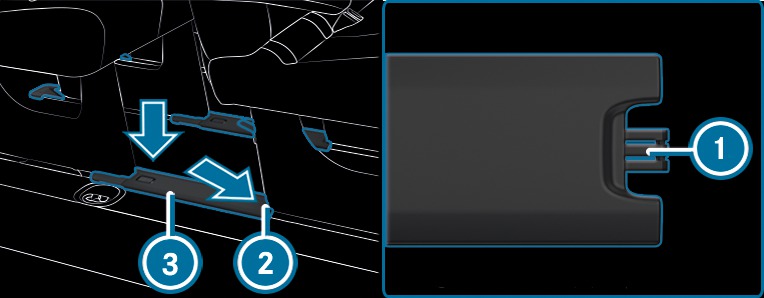
 such that retaining lug
such that retaining lug  is pointing towards rear seat anchorage
is pointing towards rear seat anchorage  .
.  into rear seat anchorage
into rear seat anchorage  by pushing it downwards at an angle and then clip it to the seat shell.
by pushing it downwards at an angle and then clip it to the seat shell. Please note that the metallic seat support in the vehicle floor will heat up during a journey if the rear seating has been removed.
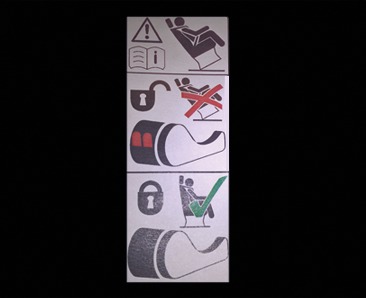
Secure engagement of the rear bench seat is guaranteed only if the seat anchorages are kept clean and free of objects.
In vehicles registered as passenger vehicles, observe the maximum permitted number of seats.

The locks on the front legs of the bench seat will now be locked and the red indicator tabs on the housing of release handle  should no longer be visible.
should no longer be visible.
If the red indicator tabs on the release handle housing are visible, the bench seat is not correctly engaged.
If the bench seat is not correctly engaged, you can rectify this situation as follows:

